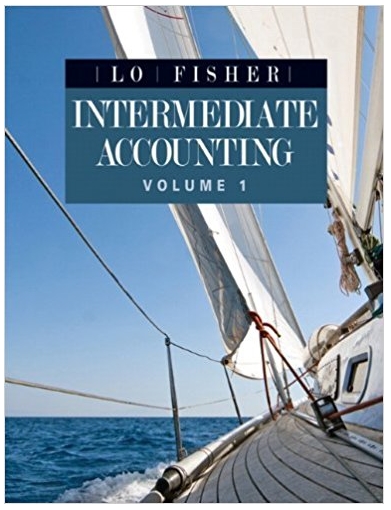Cross Company Limited, a private company, was started on January 1, 2009. For the first year, the
Question:
.png)
i. Long-term contracts: Cross Company used the completed contract method for revenue recognition in 2009. Management now believes that the percentage of completion method would be better. Income under the completed contract method for 2009 was $3,000,000 and for 2010 it was $4,000,000. If the percentage of completion method had been used, the incomes would have been $4,200,000 (2009) and $3,700,000 (2010).
ii. Accounts receivable: The accounts receivable on December 31, 2009 included a $100,000 account that was not provided for but subsequently was written off during 2010 as the customer went bankrupt after the issuance of the financial statements. Cross Company would like to adjust 2009 for this oversight as it sees this as an error.
iii. Machine depreciation: Cross Company has one huge machine that cost $5,000,000 and was depreciated over an estimated useful life of 10 years. Upon reviewing the manufacturer€™s reports in 2010, management now firmly believes the machine will last a total of 15 years from date of purchase. They would like to change last year€™s depreciation charge based on this analysis. Depreciation expense of $500,000 has been recorded for 2010.
iv. Building depreciation: The company€™s building (cost $3,000,000, estimated salvage value $0, useful life 20 years) was depreciated last year using the 10% declining- balance method. The company and auditor now agree that the straight-line method would be a more appropriate method to use. A depreciation provision of $270,000 has been made for 2010.
v. Inventories: The accountant last year failed to apply the lower of cost and net realizable value test to ending inventory. Upon review, the inventory balance for last year should have been reduced by $200,000. The closing inventory allowance for this year-end should be $300,000. No entry has been made for this matter.
vi. Warranties: Cross Company does not accrue for warranties; rather it records the warranty expense when amounts are paid. Cross provides a one-year warranty for defective goods. Payments to satisfy warranty claims in 2009 were $200,000, and $320,000 2010. Out of the $320,000 paid in 2010, $150,000 related to 2009 sales. A reasonable estimate of warranties payable at the end of 2010 is $275,000.
Required:
a. As the audit senior on this engagement, what is your recommended treatment for each of these matters in terms of whether they are errors, changes in accounting policy, or changes in estimate? Explain your conclusion.
b. Assume that management of Cross Company agrees with your recommendations. Prepare the corrected statements of comprehensive income for 2009 and 2010.
The ending inventory is the amount of inventory that a business is required to present on its balance sheet. It can be calculated using the ending inventory formula Ending Inventory Formula =... Financial Statements
Financial statements are the standardized formats to present the financial information related to a business or an organization for its users. Financial statements contain the historical information as well as current period’s financial... Salvage Value
Salvage value is the estimated book value of an asset after depreciation is complete, based on what a company expects to receive in exchange for the asset at the end of its useful life. As such, an asset’s estimated salvage value is an important... Accounts Receivable
Accounts receivables are debts owed to your company, usually from sales on credit. Accounts receivable is business asset, the sum of the money owed to you by customers who haven’t paid.The standard procedure in business-to-business sales is that...
Step by Step Answer:






